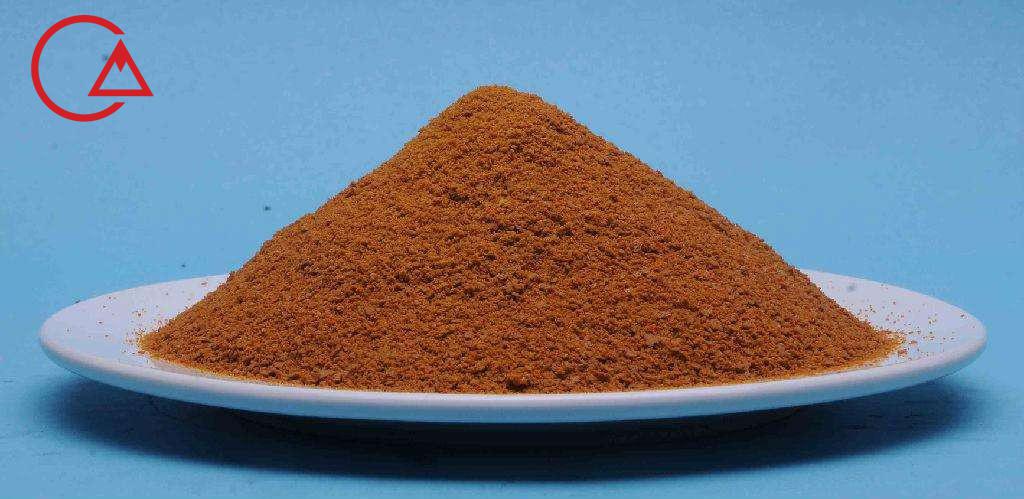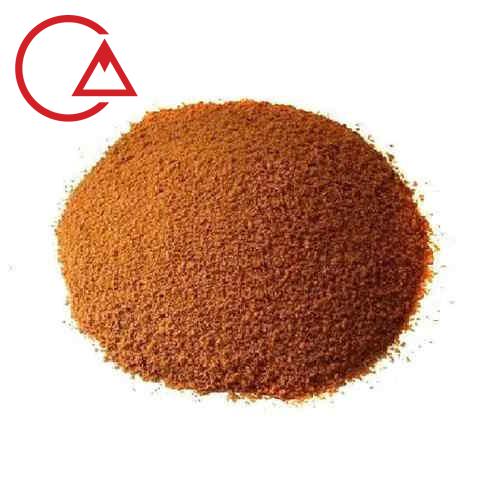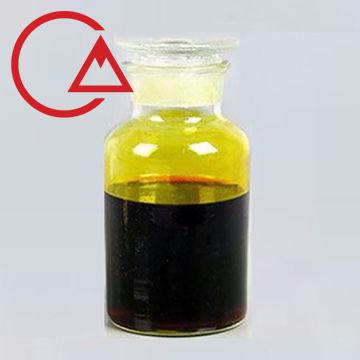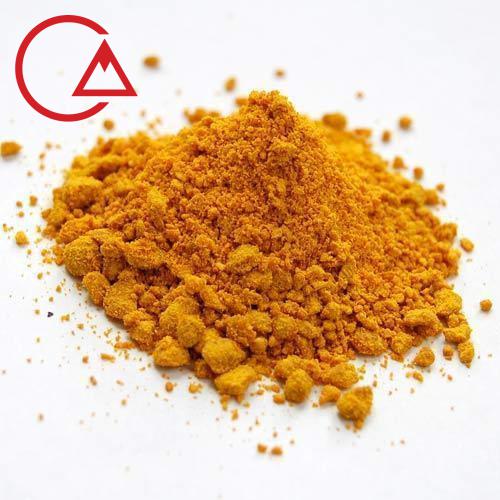What is ferric chloride (chloroferric)?
Iron chloride , also called iron(III) chloride, is an industrial-scale commodity chemical compound with the formula FeCl3 and with iron in the +3 oxidation state. The color of iron chloride (chloroferric) is dark green to brown depending on the transmitted light and viewing angle. Ferric chloride liquid is produced from the combination of chlorine and iron or its derivatives (acid chloride).
Chloroferric or iron chloride with the chemical name FeCl3 is one of the very strong coagulants that has acidic properties and has a very high corrosive power. These benzalkonium chloride compounds are used in various industries such as metal extraction, pharmaceuticals, dyeing, papermaking, arsenic removal, as well as water and wastewater treatment. Ferric chloride is known by different names, including ferric chloride, ferric chloride, ferric chloride, ferric trichloride, ferric chloride, ferric chloride, powdered ferric chloride and liquid chloroferric.
Applications of iron chloride (chloroferric)
Iron chloride (chloroferric) or FeCl3 and polyaluminum chloride are used as the main coagulant and sediment in industrial and municipal water treatment. Ferric chloride is used in water and wastewater treatment plants to remove heavy metals, unpleasant smell of H2S, iron chloride (chloroferric) is also used to reduce the removal of oils, organic substances and mineral phosphates. One of the other uses of chloroform is in the printing and sterilization industry.
Application of iron chloride (chloroferric) in water and wastewater treatment
Due to the fact that there are many concerns about the presence of fine suspended particles passing through the filters in the treatment of industrial and sanitary wastewaters, for this reason, the use of biocidal coagulants in water and wastewater treatment is high. Iron chloride is among the coagulants used in this field. These compounds react with hydroxide ion after entering water. As a result of this reaction, iron III hydroxide, which is a strong coagulant, is formed. Finally, this combination causes the colloidal and suspended particles in the wastewater to connect and gradually settle on the bottom of the treatment pond. By using this iron chloride, a large amount of mud can settle in the water treatment tanks and lead to an increase in the quality of the water coming out of the treatment plant.

Types of iron chloride
Iron chloride (chloroferric ) acid can be divided into different groups based on its appearance, which include:
Iron chloride powder
Pointing out that the most important feature of powdered iron chloride (chloroferric) is the absence of water in it and its very high ability to absorb moisture, he pointed out: the color of these chemical mineral compounds is brown powder and with the absorption of moisture it turns orange in color. comes.
Liquid chloroform
Another type of this chlorophric is in solution and liquid form and their color is garlic brown. The concentration of iron chloride in this solution is about 37 to 43 mass degrees and it has a sharp and non-flammable acid smell. It should also be noted that in very high concentrations these compounds have six water molecules and their chemical formula is (FeCl3.6H2O). High concentration iron chloride is called 6-water crystal because it consists of six water molecules and is yellow in color.
How to produce chloroform
In the production process of iron chloride (chloroferric), dry chlorine and iron are used, and a very high temperature of about 600 degrees Celsius is needed to carry out the reaction between the two. Chlorine and iron react together and due to high heat, eventually iron is oxidized and turns into iron chloride. Finally, iron chloride II reacts with chlorine in the environment to iron chloride III.
In addition to the above method, this compound can also be prepared from the reaction of hydrochloric acid with iron. In this case, iron is oxidized in reaction with hydrochloric acid and then reacts with chlorine and turns into chloroferric. As mentioned, as a result of these reactions and according to the amount of heat and environmental conditions, the composition will be obtained in the form of powder, crystal and liquid.

Physical and chemical properties of iron chloride (chloroferric)
Before buying iron chloride (chloroferric), it is necessary to have sufficient knowledge of its physical and chemical properties so that you can choose the right type according to the purpose. In summary, the physical and chemical properties of chloroform can be stated as follows:
Iron chloride (chloroferric) is very acidic and has a pungent smell. Due to its high acid strength and high corrosiveness, safety principles must be observed when using it.
Dry iron chloride, which is in powder form, dissolves in water at 0°C and boils at 306°C.
Ferric chloride crystal or 6Abe dissolves in water at 20°C and boils at 37°C.
The solubility of fecl3 in water depends on its temperature. Therefore, in 100 cc of water with a temperature of 0 degrees Celsius, their solubility is 74.4 grams. This value increases to 537.7 grams for water at the boiling point.
The coagulation property of FeCl3 is very high and for this reason it is used in wastewater treatment.
Disadvantages and dangers of iron chloride
Among the most important dangers of iron chloride (chloroferric), the following can be mentioned:
Using these materials without gloves leads to severe skin burns.
The contact of these substances with the eyes is extremely harmful and causes irritation and reduction of vision and even blindness. Immediately after contact with the eyes, you should wash it for a few minutes.
Entering iron chloride into the digestive system is dangerous and harmful. If these items enter the stomach and digestive tract, severe poisoning will occur and you should immediately go to the medical center.

The price of iron chloride (chloroferric)
The price of iron chloride (chloroferric) will vary according to several factors, including their degree of purity, as well as whether the composition is powdery or liquid and crystalline. For example, the price of chlorofric acid with a purity of 20 is cheaper than the compound with a purity of 40.
To inquire about the price, you can contact the experts of tool fan control.
Sale of industrial and laboratory iron chloride
The products offered by this group include 6 types of blue and 3 types of industrial and laboratory iron chloride (chloroferric) and are sold in general and partial form. Due to the difference in different types of these materials, we suggest that you contact the experts of the fan control sales before buying laboratory and industrial iron chloride.
Buy iron chloride (chloroferric)
Mahar Fan Tool operates as one of the largest active teams in the field of equipment and chemicals needed in water and wastewater treatment. The experts of harness fan tools offer free consultation before buying iron chloride (chloroferric) , zeolite and Debem … to get more information about the characteristics and purity of the products of this collection .

Iron chloride is a dark colored crystal with +3 iron oxidation state. It is also called iron(III) chloride or molysite. It is an iron coordinating agent that acts as an astringent and Lewis acid. The chemical formula of ferric chloride is FeCl3.
It is a chemical substance with the molecular formula FeCl3. Therefore, the compound FeCl3 is made of iron (III) and chlorine.
It is used for wastewater treatment, industrial waste, water treatment, as an etching agent for circuit board engraving and in the manufacture of other chemicals. Black to brown hydroscopic crystals.
FeCl3 is about twice as stable as FeCl2 to the elements, Fe+Cl2, so the system can dramatically lower the energy of the electrons in the system by rearranging in this way.
